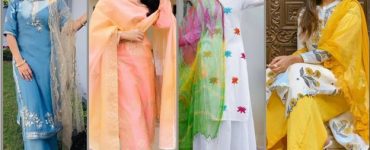The fashion industry is renowned for its ability to captivate and influence consumers through innovative designs, aesthetics, and seamless user experiences. Similarly, the field of User Experience (UX) design focuses on creating products and services that engage and delight users. Despite their apparent differences, there are valuable lessons that UX designers can learn from the fashion industry to enhance their craft.

This article explores the parallels between UX design and fashion, uncovering ways in which UX designers can benefit from the principles and practices of the fashion world. Also, you can discover how to infuse the principles of personalization, individuality, and trend awareness from the fashion industry into your UI/UX design skills with this UI and UX Design Course.
Embracing User-Centricity
Embracing user-centricity is a fundamental principle that UX designers can learn from the fashion industry. It involves placing the needs, preferences, and desires of the end-users at the forefront of the design process. By immersing themselves in the world of the users, designers can gain valuable insights that shape design decisions and create experiences that truly resonate with the target audience.
To embrace user-centricity, UX designers must conduct thorough user research. This involves understanding the target users’ behaviors, motivations, goals, and pain points. Various research methods such as surveys, interviews, and observations can be employed to gather this information. By empathizing with the users and understanding their unique perspectives, designers can gain a deep understanding of their needs and desires.
Once the user research is complete, designers can use the insights gathered to inform their design decisions. They can identify patterns, preferences, and pain points that will guide them in creating user-centered solutions. For example, if the research reveals that users struggle with a specific task or find a particular feature confusing, the designer can focus on improving the usability and accessibility of that feature.
User-centricity also involves involving users in the design process through methods such as usability testing and feedback sessions. By allowing users to interact with prototypes or early versions of the product, designers can gather valuable feedback on its usability, clarity, and overall user experience. This feedback can then be used to refine and iterate on the design, ensuring that it meets the needs and expectations of the users.
Creating Delightful Experiences
Creating delightful experiences in UX design involves paying attention to visual aesthetics, intuitive interactions, micro interactions, and emotional design. Visual aesthetics focuses on creating visually pleasing interfaces with appropriate color palettes, typography, and imagery. Intuitive interactions ensure that the interface is easy to navigate and understand.
Microinteractions add subtle animations or visual cues to provide feedback and surprise users. The emotional design aims to evoke positive emotions through the overall experience, engaging users on a deeper level. By incorporating these elements, UX designers can create memorable and delightful experiences that leave a lasting impression on users.
Iterative Design Process
The iterative design process is a fundamental approach in UX design that involves continuously refining and improving a product through cycles of testing, feedback, and iteration. It embraces the idea that design is an ongoing, iterative journey rather than a linear, one-time process.
The iterative design process typically consists of the following key steps:
- Research and Discovery: The process begins with gathering user insights, conducting market research, and understanding the goals and context of the project. This phase involves user research methods like interviews, surveys, and usability testing to gain a deep understanding of user needs and pain points.
- Ideation and Prototyping: Based on the research insights, designers generate ideas and create low-fidelity prototypes. These prototypes can be in the form of sketches, wireframes, or interactive mockups that represent the basic structure and functionality of the product.
- Testing and Feedback: The prototypes are then shared with users for testing and feedback. Usability testing sessions and user feedback surveys help identify usability issues, gather user preferences, and understand how well the design meets user expectations. This feedback is invaluable in identifying areas of improvement.
- Analysis and Iteration: Designers analyze the feedback and data collected from testing sessions to identify patterns, issues, and opportunities for improvement. They then iterate on the design, making necessary adjustments and enhancements to address the identified issues.
- Repeat and Refine: The process of testing, feedback, analysis, and iteration is repeated multiple times, with each iteration bringing the design closer to its optimal state. This cyclical approach allows designers to continuously refine and enhance the product based on real user insights.
Trend Awareness
Trend awareness is an important aspect that UX designers can learn from the fashion industry. In both fields, staying up-to-date with the latest trends is crucial to create designs that are modern, relevant, and resonate with the target audience. By being aware of trends in user interface design, interaction patterns, and emerging technologies, UX designers can incorporate fresh and innovative elements into their work.
Trend awareness involves actively researching and observing the current design landscape. This includes keeping track of popular design styles, emerging technologies, and user preferences. It also involves staying informed about advancements in the industry, attending design conferences, and engaging in design communities to exchange ideas and insights.
Cohesion and Consistency
Cohesion and consistency are key principles that UX designers can learn from the fashion industry. In fashion, designers create cohesive collections that tell a consistent story, and the same principle applies to UX design. Cohesion and consistency refer to the practice of maintaining a unified and harmonious user experience across different screens, components, and interactions within a product.
Cohesion in UX design involves ensuring that all elements of the design work together seamlessly, creating a cohesive and unified experience. This includes visual elements such as color schemes, typography, and imagery, as well as interaction patterns, layout structures, and content tone. By maintaining cohesion, designers create a sense of cohesiveness and unity, allowing users to navigate the product intuitively and without confusion.
Tailoring for Individuality
Tailoring for individuality is an important concept that UX designers can learn from the fashion industry. In fashion, designers understand the significance of personalization and self-expression, and UX designers can apply the same principle to create customized experiences that cater to the unique preferences and needs of individual users.
Tailoring for individuality involves providing options and features that allow users to personalize and customize their experiences within a product or service. This can include elements such as customizable settings, personalized recommendations, user-specific preferences, and adaptable interfaces.





















